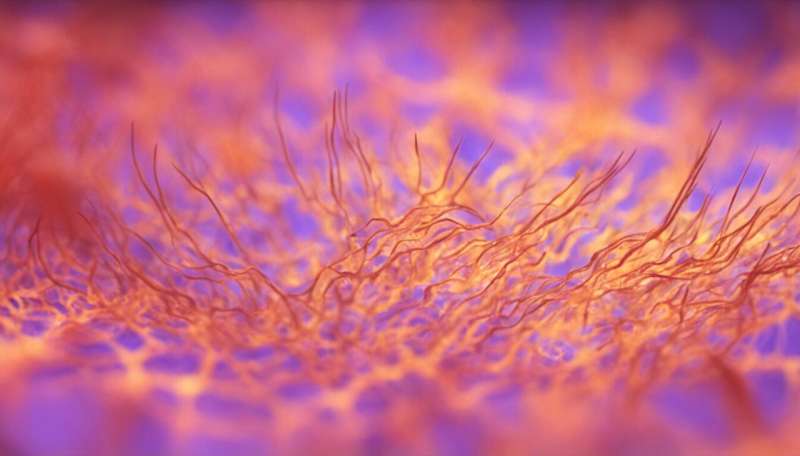Iris research focuses on blood vessel patterns

The structure of the microvasculature or blood vessels in the iris could play an important role in people's contraction of eye maladies like glaucoma and cataract, according to a WA-led study.
The research aimed to investigate the role of the iris microvasculature and its endothelium, the layer of cells lining the vessels.
Lions Eye Institute researcher and PhD candidate Hongfang Yang says the iris is the only vascular tissue (consisting of blood vessels) in the anterior chamber, immersed in the aqueous humour and surrounded by several avascular tissues (lacking blood vessels) including the cornea, trabecular meshwork and lens.
"Trabecular meshwork is known to be a key structure in the pathogenic process of glaucoma, and lens is the part [that] grows opaque when people get cataract," Dr Yang says.
"Any blockage or any dysfunction of the trabecular meshwork would decrease aqueous flow-out, which would result in high ocular pressure, the main character of glaucoma."
Researchers perfused (passed a fluid through) the temporal long posterior ciliary artery of 11 pig eyes and studied the iris' blood vessels for their distribution, orders and endothelial characteristics.
"We used the micropipette to cannulate into the vessel and the other end of the pipette is connected to a pump, which we use to control the flow rate and to perfuse the eye," Dr Yang says.
"We could flush out the blood cells and then perfuse with silver nitrate."
Nitrate turns up blood vessels and cell patterns
Silver nitrate deposited at intracellular gaps and turned from white to black after exposure to bright light, making the blood vessels and endothelial cell arrangements visible under a microscope.
They determined the iris had a high density of microvasculature, and an unusual blood vessel distribution pattern.
"All these findings suggest the iris has a high blood-flow rate and capability for sufficient nutrient and waste exchange between the blood stream and the iris stroma," Dr Yang says.
Changes in oxygen gradients and oxidative stress have previously found to be a major pathogenic factor for cataract and glaucoma.
The iris microvasculature is the main source of oxygen for the avascular tissues (lacking in blood vessels) in the anterior chamber, leading scientists to believe it plays a critical role in maintaining the balance of oxygen.
Dr Yang says any malfunction in the waste exchange process would harm the lens and trabecular meshwork, the key structures in cataract and glaucoma formation.
"We have hypothesised that there is a relationship between the vessels in the iris and the volume change of the iris," she says.
More information: "Quantitative study of the microvasculature and its endothelial cells in the porcine iris." Exp Eye Res. 2015 Mar;132:249-58. DOI: 10.1016/j.exer.2015.02.006


















